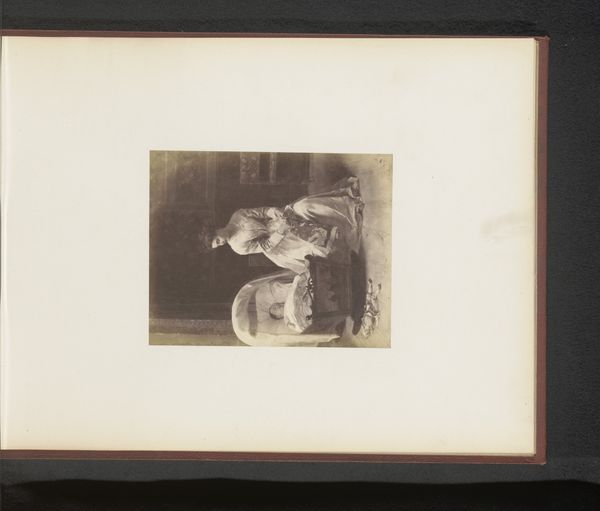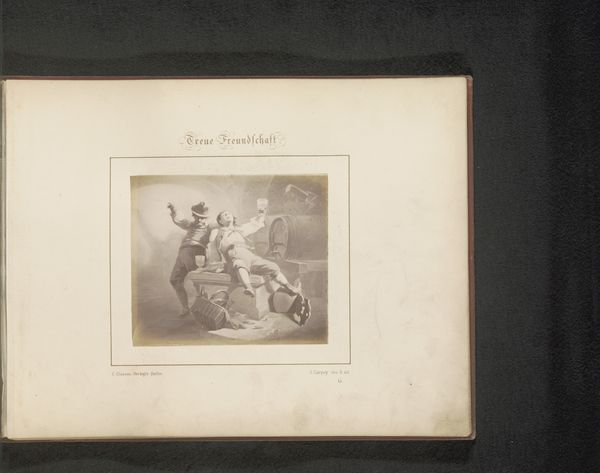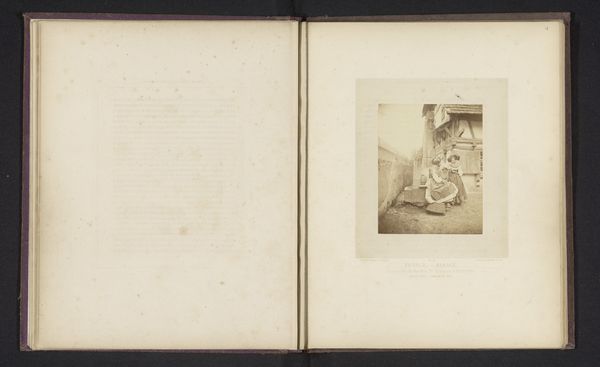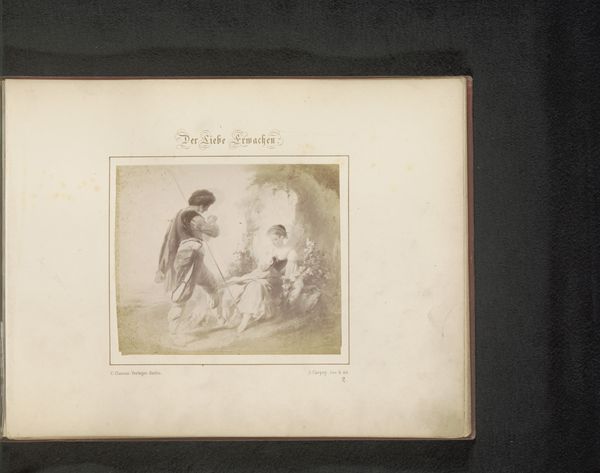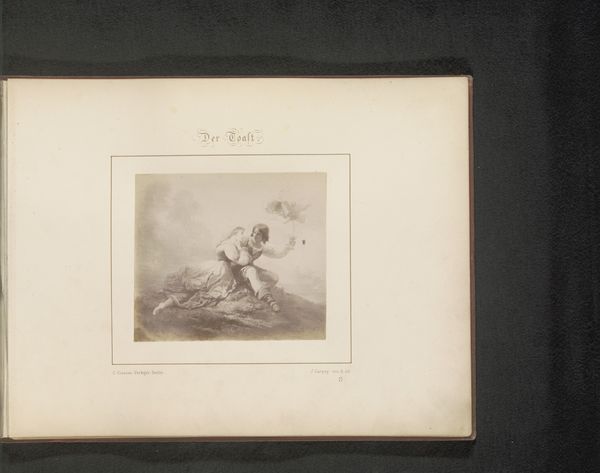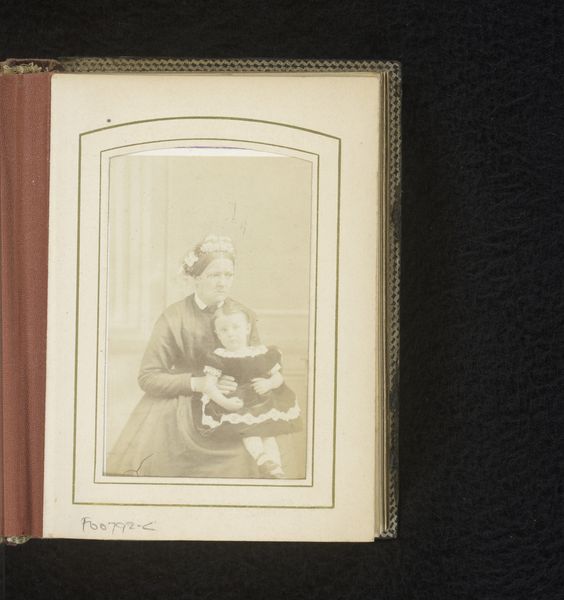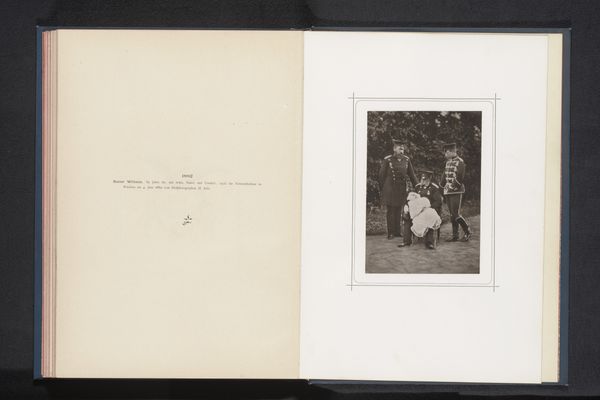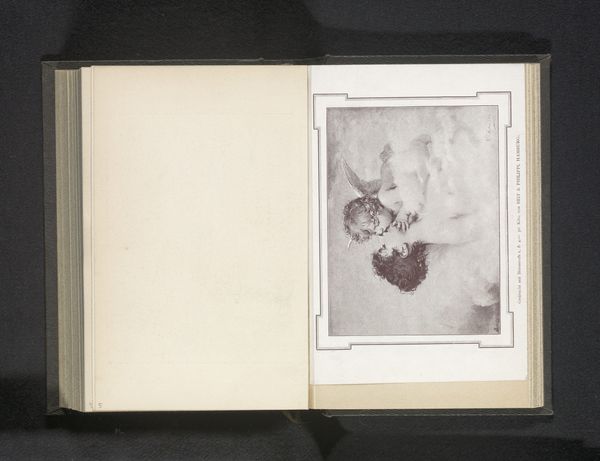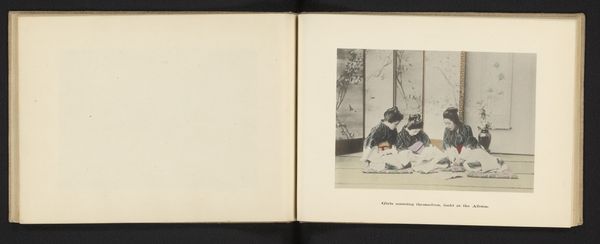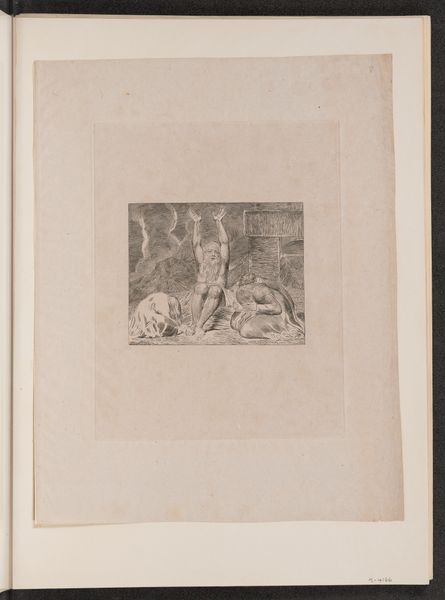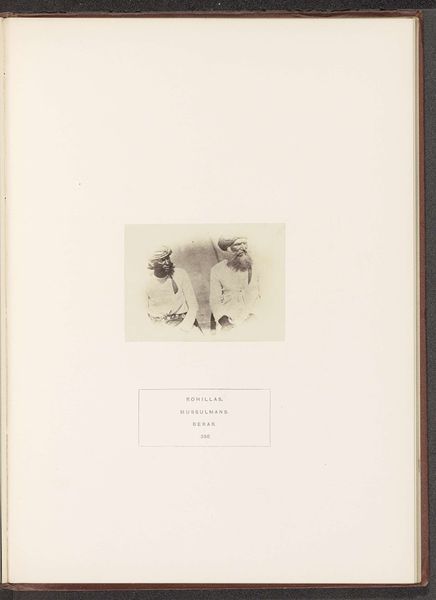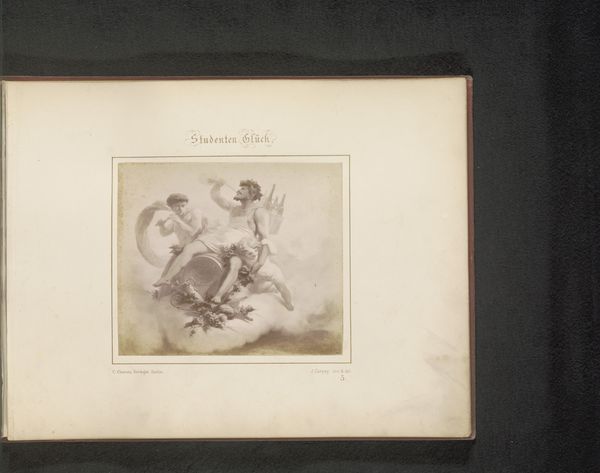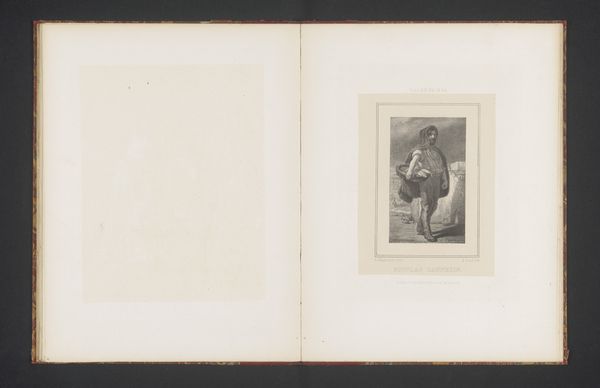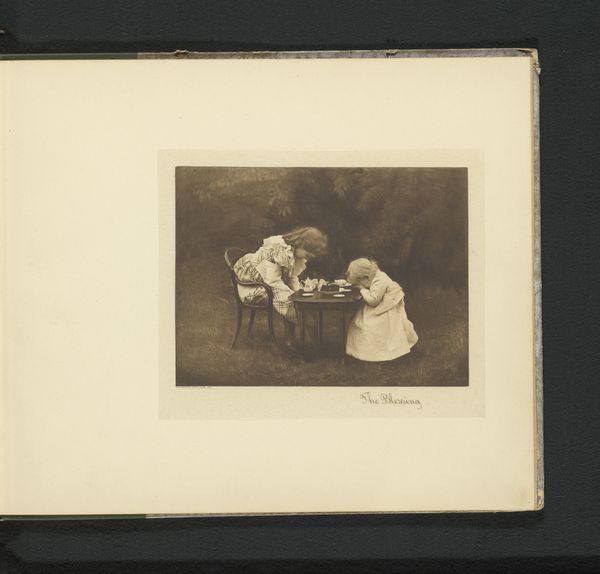
Fotoreproductie van een ontwerp van twee mannen die een dobbelspel spelen door J. Carpey before 1858
0:00
0:00
print, photography, gelatin-silver-print
# print
#
figuration
#
photography
#
gelatin-silver-print
#
genre-painting
#
realism
Dimensions: height 119 mm, width 142 mm
Copyright: Rijks Museum: Open Domain
Curator: So, here we have a photograph titled "Fotoreproductie van een ontwerp van twee mannen die een dobbelspel spelen door J. Carpey," which roughly translates to "Photographic reproduction of a design of two men playing dice by J. Carpey." It was made before 1858. Quite a mouthful, isn't it? Editor: My goodness, it's so… sepia. Makes you feel like you've stumbled into an old tavern. All that's missing is the clinking of tankards and maybe a questionable bard in the corner! It’s kind of romantic in its own gloomy way. Curator: It's interesting that you call it romantic. I'd argue the photographic rendering flattens out any possibility of spatial depth, so there are no tangible romantic cues. The figures appear pressed together, almost like a medieval tapestry but drained of colour, relying more on the textural grain of the gelatin-silver print than emotional projection. Editor: Maybe. But the fuzzy quality sort of invites speculation. What are they gambling? Are they friends or rivals? The vagueness tickles the imagination more than something sharply rendered, don’t you think? And notice the server holding drinks. Curator: Yes, the composition definitely has that genre painting sensibility, even with the lack of bright colours and dramatic contrast you'd find in the typical "genre painting" which in that period was already established. It is very realistic, portraying such a realistic everyday event. The eye follows from the men at the table to the waitress who seems unfazed by it all. All parts connect in a cohesive structure. Editor: You know, looking closer, I bet you're right about it being more documentary than dramatic. It is less about any emotional meaning, and more a representation of the setting or social conventions of the time, which almost takes away any importance. Makes you wonder about the intention behind creating and then photographing it in the first place! Curator: Exactly! I believe the value of the piece lies in its construction as a historic record and artistic method rather than pure emotive narrative. The aesthetic of the image provides the scene's core definition, and allows the audience to learn the setting and circumstances of the painting through a gelatin-silver printing on paper. Editor: Still, all that beige gives the image an unearthly look. It has something dreamlike. Maybe even after so many theoretical points and historical setting facts that make an intellectual sense of what's being observed. Curator: Perhaps it shows that different angles, both analytical and artistic, reveal deeper, less obvious layers of reality. The best thing of art, in my opinion, that exists is that one idea may branch off into different points, forming different values based on personal vision, social context and/or analytical interpretation. Editor: Cheers to that! From smoky taverns to social commentary and technical elements, seems this little print holds much more than you'd first suspect.
Comments
No comments
Be the first to comment and join the conversation on the ultimate creative platform.
